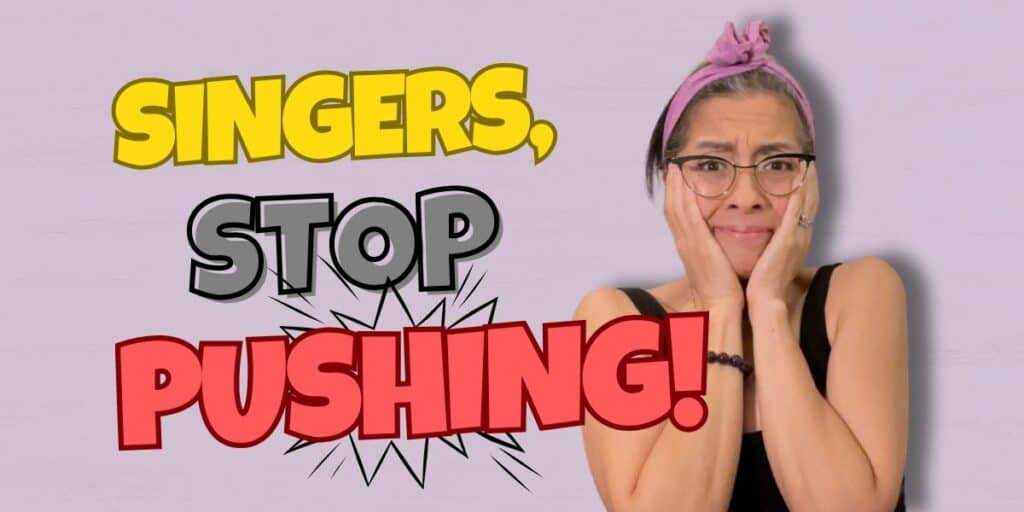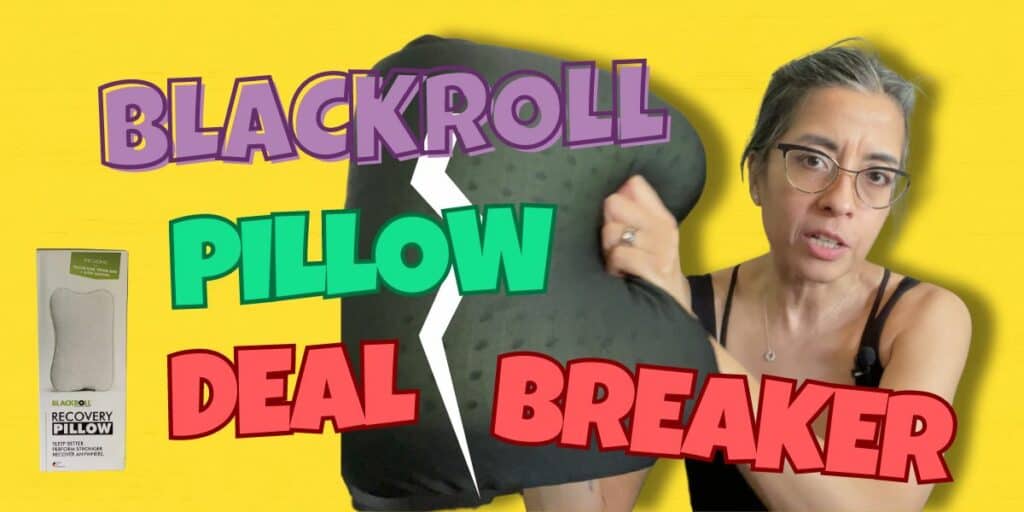So you’re injured, can you and should you keep training?
Like This Post?
Never miss a post.
Get our blog posts delivered straight to your inbox!
In this episode of MoveMedics TV, I walk you through the critical thinking process to help answer this very important and popular question.
We look closely at 3 main factors for consideration:
1. Why you have pain
2. The irritability of your pain
3. The movement you want to keep doing
As usual, I’ve sprinkled lots of tips for you throughout.
A big thank you to my dear friend Natasha Wang for letting me share her injury story.
Check out Natasha’s awesomeness here:
Her Website
Her Instagram
’Til next time, Be Free In Your Movement™.
x
Selina
B. Phty
This information is not medical advice. Got health concerns? Consult a real-life health professional.
Views are my own.
*Affiliate links. Your choosing to use these goes towards supporting my content creation. Thank you.
So you’re injured, can you and should you keep training? In today’s episode, I’m going to walk you through the critical thinking process to help answer this very important and popular question, and of course I will sprinkle tips for you along the way. Ready? Let’s jump in.
Hi, I’m Selina, physio from MoveMedics, welcome to my channel. I help people improve their movement for fun and function, with special focus on safe flexibility training and movement for singing, if these sounds good to you please subscribe to my channel and ding that notification bell so you don’t miss my new videos when they come out.
Pain and injuries are a part of life but they suck. They are stressful, inconvenient, and if you are like my friend, Natasha Wang, who is a movement teacher, it can also impact your livelihood. In fact, this episode was inspired by Natasha who is currently experiencing a flare-up of back pain.
Now Natasha is a multiple time world champion pole dancer, she’s an amazing athlete, a beautiful performer, a great teacher, and also an awesome human so be sure to check her out.
Now Natasha has very high Movement Capacity and she relies on her body to function at that high level so she can make a living, and when you have pain and can’t do that, it really adds an extra dimension of stress and worry to an already horrible situation.
And a big shout out to Natasha for allowing me to share her story today and I wish you a speedy recovery.
So can you and should you train?
Let me be honest with you up front, there are no hard and fast rules about this, no formula, no one-size-fits-all solution, and there ain’t any recipes.
But before you despair, we can always count on knowledge, evidence-based information, and my favourite, critical thinking. So let’s think together.
First up, I want you to know the golden rule of rehab, and that is: Movement is absolutely essential in recovery.
So naturally the next questions to ask are: What kind of movement and how much movement? Well, that all depends. It depends on many things and today we will have a look at three main things, and they are: Why you have pain, the irritability of your pain, and what movement do you want to keep doing.
We will start with irritability, which is one of the terms physios use to describe the behaviour of your pain and it has three elements: How easy it is to provoke your pain? How bad it is once provoked? And how long it takes to settle back down?
A pain that is really irritable is very easily stirred up and the pain goes right up and then it takes ages to settle back down, very nasty.
Something that is not very irritable can tolerate a lot more, it can just grumble along all day and it gets a bit worse but once you stop and rest it settles down quickly.
And of course you can have all the different combinations in between. Irritability changes, just because your pain happened one way last time or the last 10 times, doesn’t mean that it will happen the same way this time.
And within each episode of pain it can change as well. Typically it improves as you get better, your pain becomes less and less irritable until it resolves, but it can also get worse and the classic influences are stress and sleep.
Being in pain is a stressful experience and on top of that if like Natasha, you are worried about letting your students down, making yourself worse, is this the end of your career, and your livelihood, that can really intensify your pain experience.
And when you have pain you may not be able to get comfortable to sleep properly, and when you don’t get enough good quality sleep, it can very quickly increase your sensitivity to pain and decrease your pain tolerance, not very nice.
But the good news is that even the most irritable of pain can and will settle down, it may take some time and you may need to be supported by a multi-disciplinary team showing you what to do every step of the way, but know that you are not stuck.
Irritability MUST be respected, you do not want to keep provoking your pain because for the here and right now, we don’t want you to have pain.
And for your future self, we do not want your nervous system to have any negative adaptation that’s going to take you down the dark path of chronic and persistent pain.
Now this is a huge and complex subject but here are a few nuggets for you.
Neurones that fire together, wire together; which means the more your nervous system gets to produce pain, the better it gets at producing pain. You do not want that.
Also, we want to make sure that your brain, the bodyguard, your loyal, ever dutiful bodyguard who is hell-bent on keeping you safe, you do not want your bodyguard to increase the sensitivity of its danger radar, you do not want your bodyguard to lower your safe movement threshold, and you do not want your bodyguard to mark normal movement as dangerous and put them in the No-Go Zone.
Now these are just a few of the adaptations that can happen but already you can see why it is important that we respect the irritability of your pain and not keep provoking your pain.
We will come back to irritability shortly, next let’s have a look at why we have pain.
From my perspective as a private practice physio, people come to me for help with their pain fall into four categories and here is a brief summary.
Category one, you have an acute injury, you rolled your ankle and tore a ligament, or you lifted something and you hurt your back.
Category two, you have an acute flare-up of a chronic, recurrent condition, and these can be a systemic condition like arthritis that you now have a flare-up, or like Natasha, who has a musculoskeletal condition that is now flared up.
Category 3, you have recurrent pain of a known origin. So these are category 2 when they are not flared up, so when they are at their normal, regular baseline level or when they are in remission.
And category four are people who have ongoing pain with seemingly unknown origin. There are no finger pointing event that says yet that did it. These pain typically start off as a stiffness, a small niggle that grow up to become more overt pain, more frequent pain that interferes with your activities.
Classic example for category 4 are most running related pain. Most running related pain are a result of a mismatch between your Movement Capacity and the demand of your movement, you are either not strong enough to do what you want to do, or you are strong enough but you are doing too much, too often, too soon, and not getting enough rest.
Typically, anything acute, so category 1 and 2 are irritable. And even when you have an injury and you don’t really have much pain and it doesn’t seem irritable, the smart thing to do is to always treat a new injury as irritable because you don’t want to risk making your injury worse.
And a bonus tip for you, look out for swelling. Pain is not the only way your body communicates with you, if what you do makes your injured area swell up, it is irritating it.
Typically, category three, so your recurrent, ongoing condition when they are not flared up, these are not irritable, which means when it is not flared up, it is the best time for you to work on building and improving your Movement Capacity, not only will this give you better movement option for fun and function, it also works kind of like a shield to protect you from future flare up, and like a buffer for when you do experience a flare up.
For category 4, well that can vary, but let’s be honest, by the time you go see someone about it, it has become irritable, hasn’t it. So if you have a category 4 type pain and you’re watching this video, it is irritable.
So what movement is appropriate? Remember we are talking about training.
Any movement that especially provokes and aggravates your pain are inappropriate, for now. And typically, the more irritable your pain is, the smaller the window of appropriate movement is, for now.
As you get better, as the irritability of your pain settles down, you can then gradually begin to do more. So let’s take a look at a few real life scenarios.
In Natasha’s case, she tried to do some simple pole movement, she tried to go upside down on the pole, which is super simple and easy for her, but that sent her crumbling to the floor in agony, which means that as simple as it is for her, is for now inappropriate.
Does it mean she will never do that again? No. It just means that right now it is not appropriate because irritability? Must be respected.
And know that even the most irritable of pain can tolerate some movement, it may not be immediately obvious, especially when you are used to performing at a really high Movement Capacity level. Never ever underestimate the power and value of walking, simply walking around your house regularly can do you a lot of good.
Next scenario, what if you are a runner who have just rolled your ankle, just torn your ligament and you want to keep running? No inappropriate, new injury, inappropriate.
But if you were a runner who is in a category 4 situation, and you are someone who is used to running 10k a few times a week and recently started getting pain from 8k onwards, can this person keep running?
It depends. For this person we need to ask another question: What structures are involved?
If this runner has a bone stress injury then yes, you need to stop running and let your bone heal first. But if this is a tendon related issue, then maybe you could potentially have still up to 8k of pain-free running you could still do? It depends. It depends on you, how you present, and your unique circumstances.
Last scenario, if what you want to do does not in any way irritate your pain, then there is no reason for you to not do that, right.
So another friend of mine years ago injured their knee really badly, needed surgery, could not walk for months, and it was a lengthy rehab, but this person was able to keep training all the way through because they are a professional hand balancer, and they are so skilled that they could easily avoid putting any weight on their injured knee whilst they train on their hands. Sure, they had to modify their training a bit but there’s no reason that they could not keep training.
So as you can see, even when we know what we need to think about it still all depends, everyone is different, every injury is different, each episode of pain is also different, so I know this is frustrating and you may actually have more questions now than you did before, but you know what, you don’t have to do this alone!
That’s what we’re here for. Health professionals have the knowledge, the expertise to do just these things, and some of us actually enjoy the critical thinking part so outsource this to us, let us take it off your plate so you can focus on what matters the most, you!
Once again a big thank you to Natasha for letting me share your story today, it’s most appreciated and I hope you are feeling better already.
If you know someone who is in pain or are injured, show them some love and send them this video to help them out, I know they will appreciate it and I thank you in advance for sharing.
I’m currently working on some awesome online movement programmes and I have programmes specifically designed for singers and also for people who want to work on their flexibility.
If you are keen and want to be the first to know when they are ready, make sure you’re part of the MoveMedics family and you can join the fam using this link, and I will also pop the link in the description box so you can click it and head straight over to my website.
I want to invite you to come hang out with me over at the Instamagram where I share bite size movement and mindset tips.
I want to thank you very much for hanging out with me today, I appreciate your lots and I look forward to seeing you in the next episode.
And until then, thank you very much for watching and Be Free In Your Movement™







